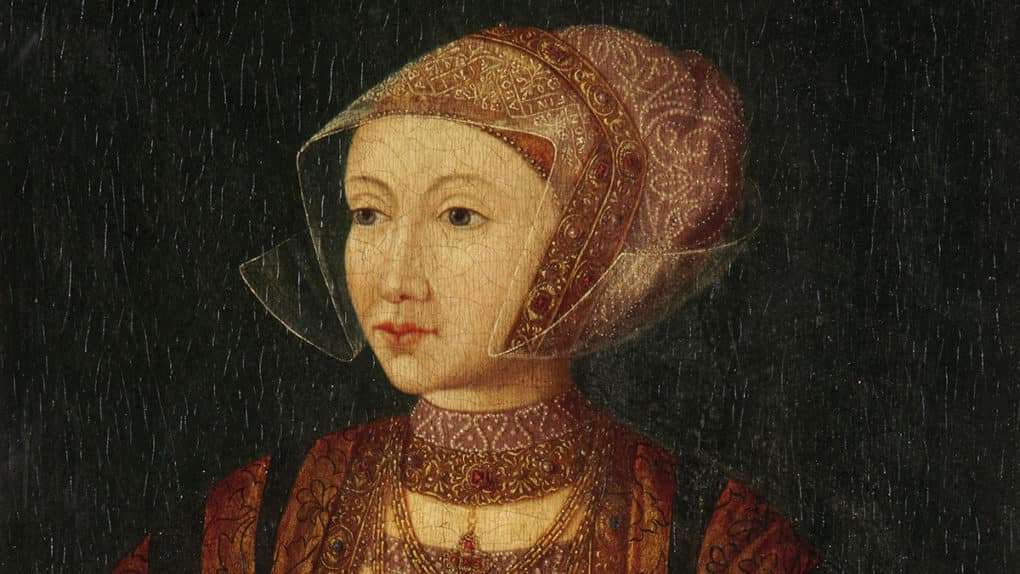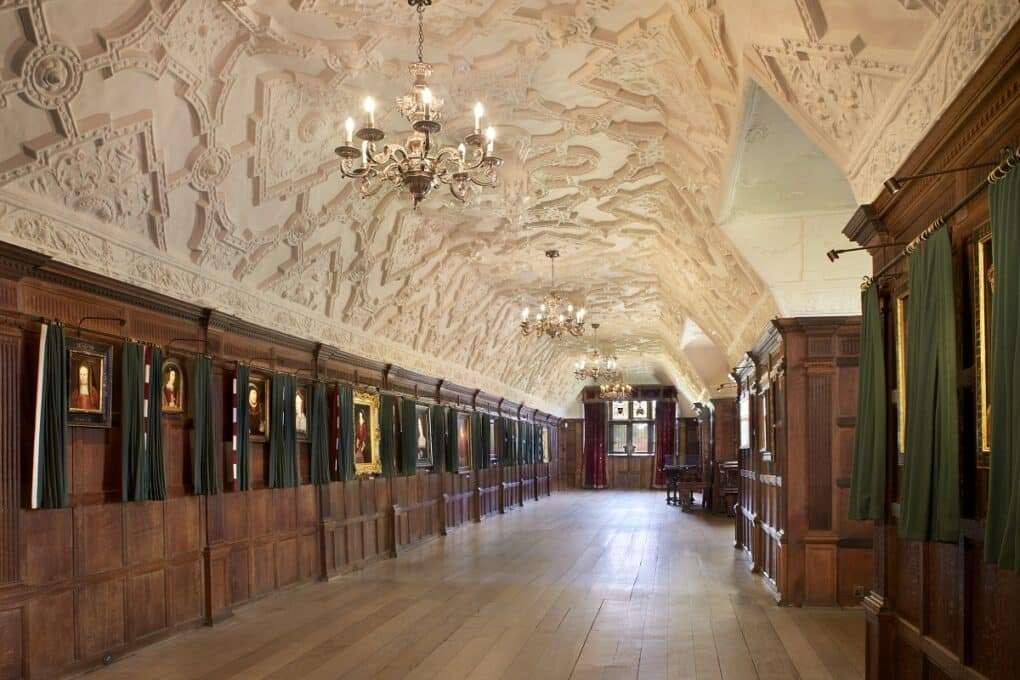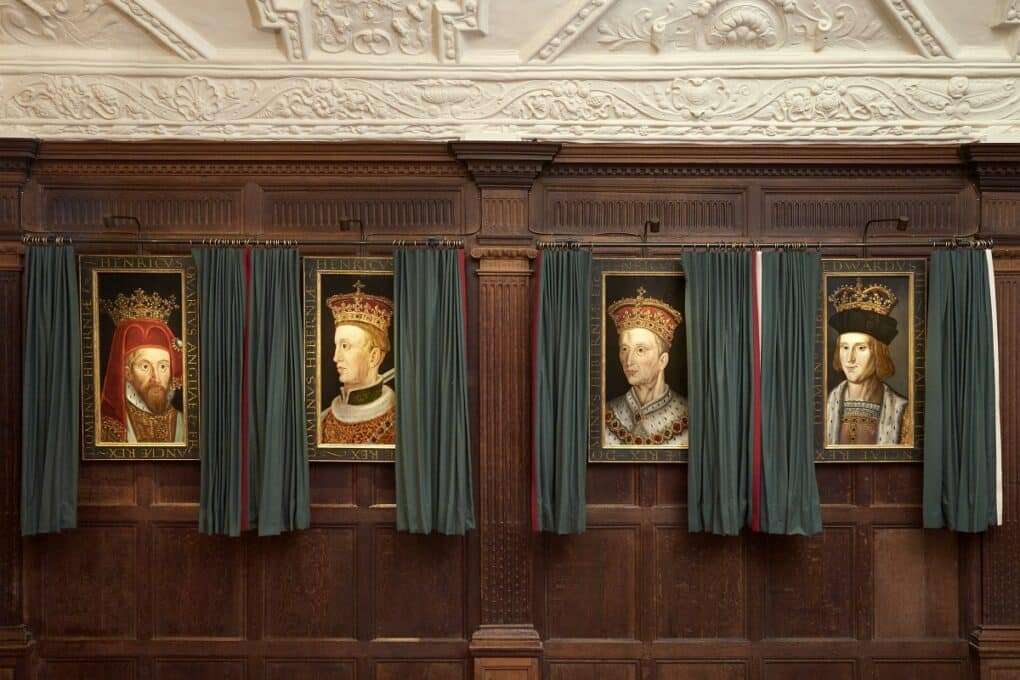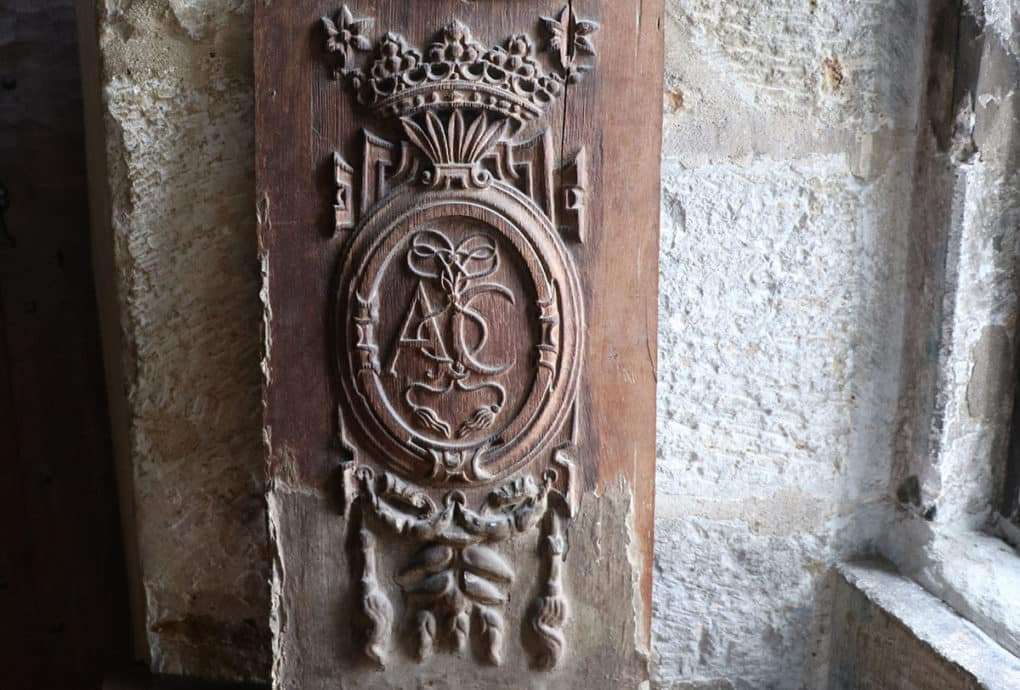
Anne Boleyn is not the only wife of Henry VIII to have a connection with Hever Castle, Anne of Cleves also spent a significant amount of time at the historic attraction.
Newly commissioned research by the esteemed architectural historian, Professor Simon Thurley, revealed that Anne of Cleves lived at Hever for far longer than anticipated. Moreover, Thurley’s examination of the castle’s fabric has shown that Anne of Cleves significantly contributed to the creation of parts of the building.
Henry VIII married Anne (his fourth wife) in 1540, based on a portrait miniature painted by Hans Holbein. The marriage was made for political reasons but ended in divorce six months later.
As part of the annulment settlement bestowed upon Anne of Cleves, Henry awarded her the honorary title of ‘The King’s Sister’, £500 a year, a sufficienta good household and two palaces.
In addition, Henry allowed Anne to lease a number of manors to enhance her status and income, including Hever, at an annual rent of £9-13s-3½d. Hever Castle had become Crown property after the death of Thomas Boleyn in 1539. As Thomas’ male heir, George, had been executed in 1536, Hever had passed to Thomas’ brother, Sir James Boleyn, who sold it to King Henry VIII for £200 on 31st December 1540.
After the annulment of her brief marriage to Henry, Anne settled happily in England and became good friends with the King and Anne Boleyn’s daughter, the future Queen Elizabeth I.
Hever Castle underwent the most significant building works since its creation during Anne’s tenure. The lease of Hever was then endowed upon Anne of Cleves after her brief marriage to the King. As well as Hever, Anne had also granted the right to occupy the palaces of Richmond and Blenchingly, which became favoured properties of Anne’s. However, after King Henry VIII died in 1547, King Edward VI’s regency council revoked Anne’s right to occupy these palatial properties. This reduction in Anne’s property portfolio likely resulted in her residing at a newly renovated and more spacious Hever Castle more frequently.
Anne of Cleves added a new range, 11ft deep against the south façade of the Great Hall, making that range double-pile and double height. The simple porch was removed, and a new door was inserted, meaning the Great Hall was accessible through a southward extension of the Screens Passage, now known as the Entrance Hall. Inserted to the west of this new range was a new staircase, which opened into the gallery above, which led into the principal first-floor Great Chamber. This area today is known as The Staircase Gallery.

Another great innovation during Anne’s tenure was the addition of the Long Gallery (pictured above). The vast crown post roof of Hever’s Great Hall was ceiled following the dismantling of the trusses and possibly tie beams. This allowed for the building of a second-floor Long Gallery above the Great Hall, which stretched across the entire width of the castle. The north wall of the range was raised to install gables at its east and west ends, and the gallery was fitted with square-headed windows, which help us to date their construction to Anne of Cleves’ tenure. Three recesses were also added to the north, with added gables forming bays off the gallery. The ceiling of this long gallery was moulded with elaborate foliage in stucco. It is probable that the third bay, at the west end of the gallery, was destroyed and required reconstruction during the 1580s.

Anne of Cleves’ Long Gallery was likely hung with ‘corridor’ portraits of the Tudor dynasty to show allegiance to the Crown and to demonstrate her acceptance of the hereditary claim of the reigning monarch. Today, Hever’s collection of Tudor portraiture has been hung in Anne of Cleves’ Long Gallery in much the same way as she would have.
Anne retained the right to live at Hever Castle until her death. She died in 1557, during the reign of Queen Mary I but it is not known how much time she spent at the Castle. However, there is a surviving letter from Anne of Cleves to Queen Mary, written in 1554, which survives in the National Archives. It was signed by Anne ‘from my poore house of Hever’.

Hever Castle has on display a rare wooden panel from a former home of Anne, purchased by the current owners, the Guthrie family and unveiled in March 2017.
There are very few artefacts associated with Anne of Cleves. It is one of only two panels to exist, excluding the ones in the church, and is the only one which is privately owned. The artefact dating to around 1544 is believed to have come from a former home of Anne of Cleves, which could have been Hever Castle.
The oak panel shows Anne’s insignia and appears to have been made for her and installed on her orders. It is one of several panels removed after she died. The design is believed to have been a basis for the decoration used on her tomb in Westminster Abbey.
Book your visit to Hever Castle & Gardens.
Within the grounds of the Hever Castle Estate, there are two opportunities for you to stay the night with us.
Hever Castle has played host to many important events and celebrations for over 600 years. In 1903 when William Waldorf Astor set about restoring Hever Castle to its former glory, he added the Astor Wing, to accommodate his family and guests, before creating a lake and the spectacular Italian Garden to house his impressive collection of ancient Greek and Roman statuary.
There are multiple places to eat & drink across the Hever Castle Estate. Select between the Castle & Gardens and Golf Club below to discover more.
Set in the mature grounds of the Hever Castle Estate, Hever Castle Golf Club is a 27 hole Kent golf course that will encourage and inspire all golf enthusiasts.
Set in the mature grounds of the Hever Castle Estate, the Wellbeing Centre consists of five smart treatment rooms.